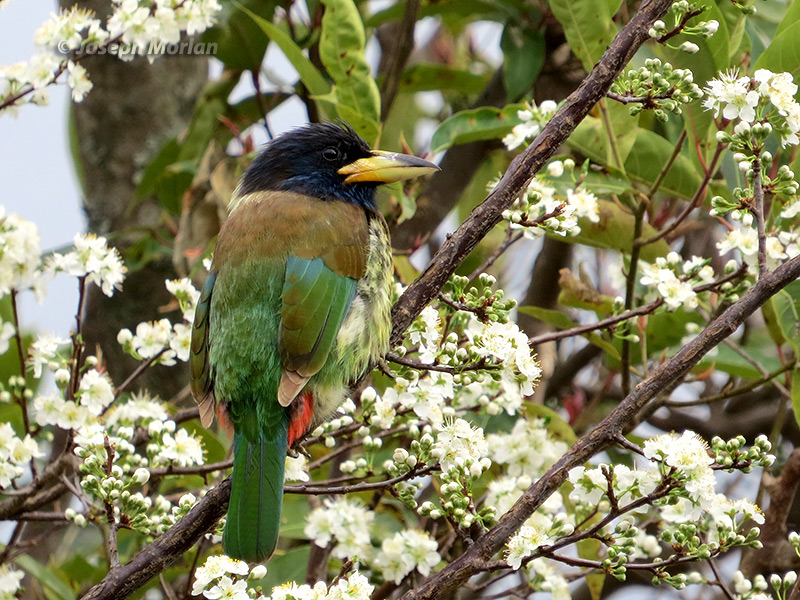
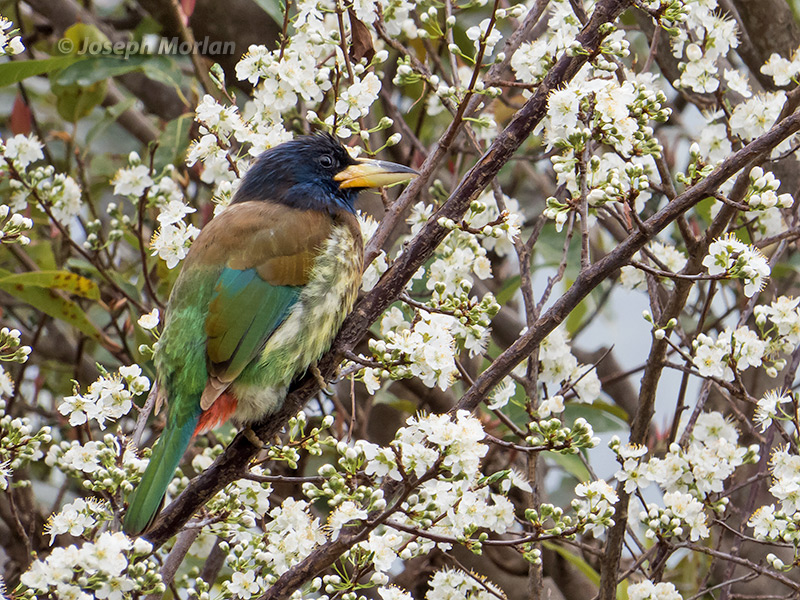
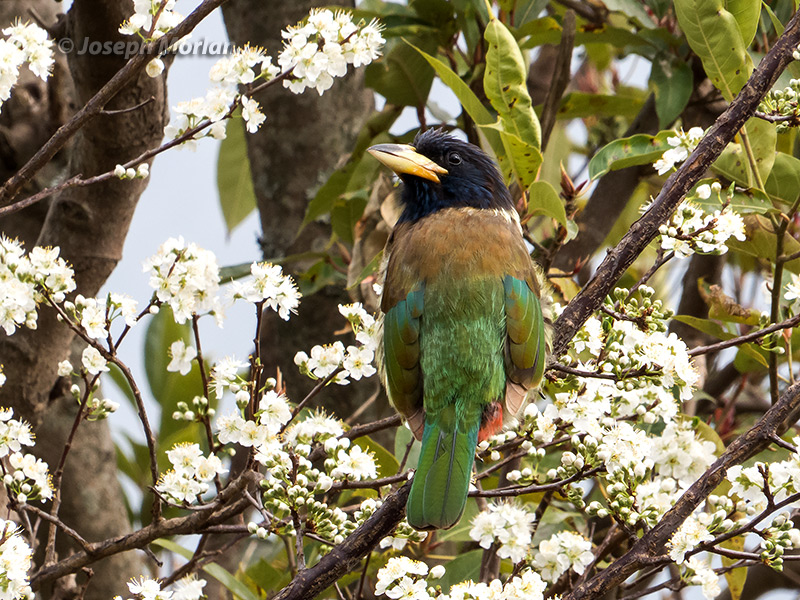
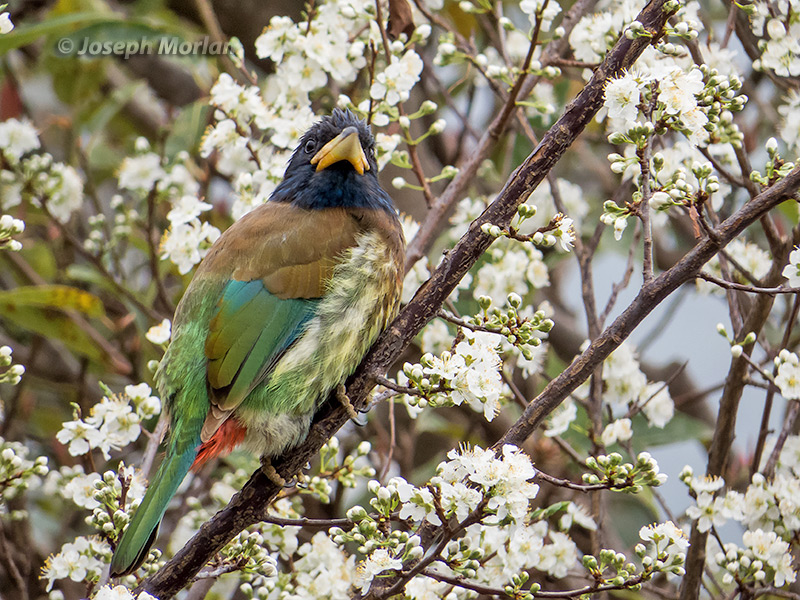
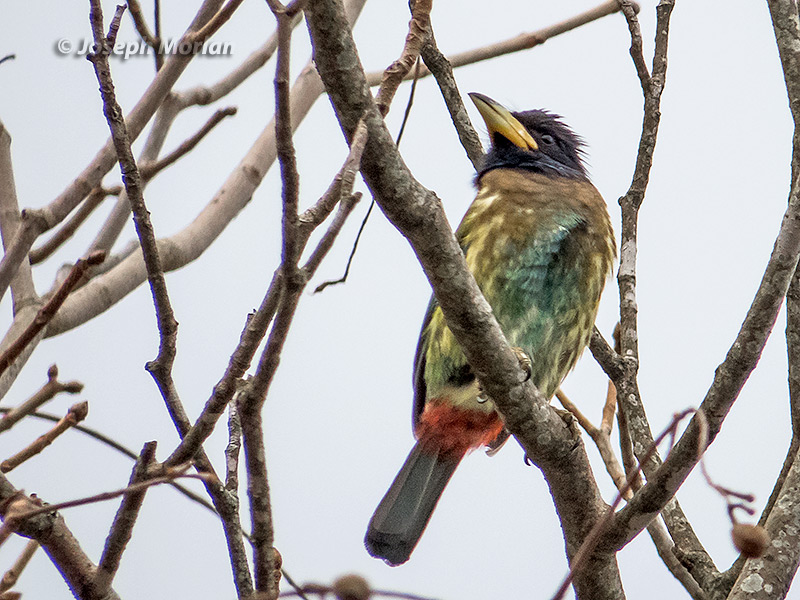
Four races currently recognized. This is presumably the paler northwest-most P. v. marshallorum characterized by a faint straw-yellow hind-collar, barely visible here. All the barbets were formerly (e.g. HBW) classified in the family Capitonidae. However recent studies have found that they are paraphyletic with respect to the New World Toucans, resulting in an invalid clade unless the Toucans are included. For this reason, most recent authors (e.g. Clements) prefer to divide the former Capitonidae into four separate families, Lybiidae (African Barbets), Megalaimidae (Asian Barbets), Semnornithidae (Toucan-Barbets), and Capitonidae (restricted now to New World Barbets). This is the largest of the Asian Barbets, over a foot long. This species along with many other Asian barbets were formerly included in the genus Megalaima. However molecular evidence found that genus to be polyphyletic, so the earlier name Psilopogon took priority and replaced all of them. Canon PowerShot SX50 HS.
References:
Ali, S & SD Ripley (1987). Compact Handbook of the Birds of India and Pakistan. Edition 2. Oxford University Press.
Rasmussen, P.C. & Anderton, J.C. (2012) Birds of South Asia. The Ripley Guide. Vols. 1 and 2. Second Edition. Smithsonian Institution. Michigan State University & Lynx Edicions, Washington. D.C., Michigan & Barcelona.
Short, L.L. & Horne, J.F.M. (2016). Great Barbet (Psilopogon virens). In: del Hoyo, J., Elliott, A., Sargatal, J., Christie, D.A. & de Juana, E. (eds.). Handbook of the Birds of the World Alive. Lynx Edicions, Barcelona. (retrieved from http://www.hbw.com/node/56031 on 12 September 2016).